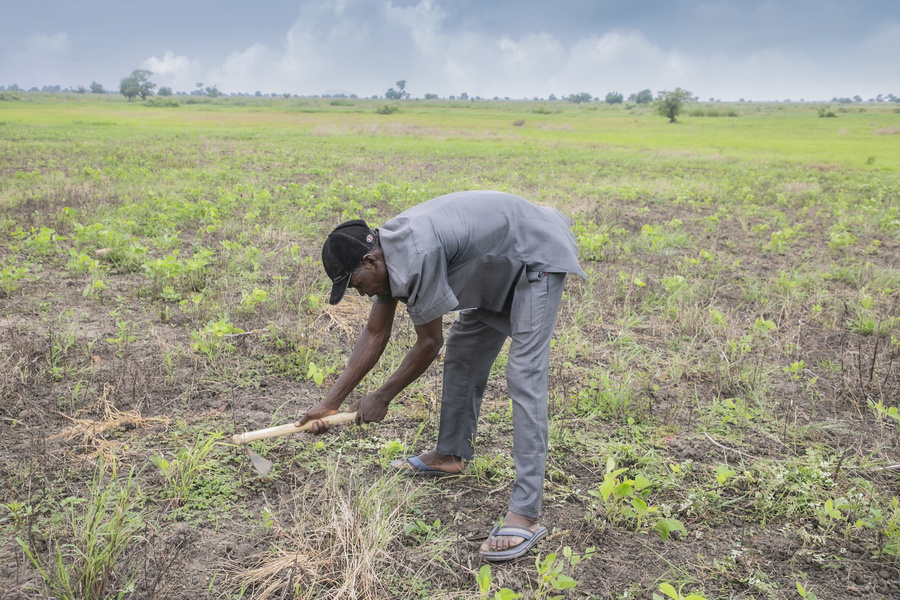
Mobility restrictions, for example those caused by the Covid-19 pandemic, can reduce remittances flows if seasonal and migrant workers are unable to travel, which has a knock-on effect on origin households and regions.

Remittances
Migrants’ departure from the household reduces its food consumption and allows for more spending per person but does also reduce labour power. Increased income from remittances allows for more spending not only on more food, but also more diverse food, transport to get food, agricultural development and education. This increases households’ resilience to economic or climatic shocks. (Szabo et al., 2022)(Obi et al., 2019)
Mobility restrictions, for example those caused by the Covid-19 pandemic, can reduce remittances flows if seasonal and migrant workers are unable to travel, which has a knock-on effect on origin households and regions.
Just as remittance flows to low- and middle-income countries (LMICs) were starting to recover from the COVID-19 pandemic, the war in Ukraine altered the global landscape for migration and remittances (Ratha et al., 2022). The war in Ukraine will most likely pose risks of food insecurity and rising poverty in many low-income countries. While food represents about 40 per cent of the consumption basket in Africa, it only represents 17 per cent in the advanced economies (ibid.). The direct effects of the war in Ukraine may be decline in remittance flows, the indirect effects will be rising food and energy prices, since Russia and Ukraine are major exporters to world markets, and with potential implications for migrants who support their families back home to cover living expenses (ibid.) and higher food prices for their families at home.
Seasonal Labour
Many countries rely upon seasonal migrant labour for agricultural production. In the EU, fruit and vegetable production is dependent on high numbers of seasonal migrant farm workers from EU and third countries, who allow wealthy countries to produce labour-intensive crops and expand farming potential (Augère-Granier, 2021). Before the Covid-19 pandemic, approximately 300,000 workers, mostly from Central and Eastern Europe were employed in Germany (IOM, 2020), while an estimated 98 per cent of the temporary agricultural labour force of the UK are from EU Member States, predominantly Romania and Bulgaria (Augère-Granier, 2021).
Food security is dependent upon migration, and its impact was seen strongly during the Covid-19 pandemic, when border closures and mobility restrictions to prevent infection spread prevented seasonal farm workers from travelling abroad to work (FAO, 2021). Food supply was slowed as domestic labour was sought and trained, working within the health restrictions, leading to disruption within food supply chains (ILO, 2020).
One consequence is a reduction in remittances to origin countries, increasing unemployment among workers reliant on seasonal labour, and increasing vulnerability and food in security in remittance-reliant households (IOM, 2021). This was reported in some ECA countries where poor families’ incomes were reduced through a lack of remittances, aggravating existing food security issues. Women, young people and those with disabilities were most affected as this exacerbated their existing vulnerabilities, while men were more likely to suffer from unemployment from the mobility and work restrictions (FAO, 2021).
COVID-19
The COVID-19 pandemic has affected global food value chains and the agriculture sector. COVID-19-related mobility restrictions prevented seasonal and agricultural workers from travelling and earning incomes abroad, which led to declines in remittances, potentially affecting household food insecurities in their countries of origin (FAO, 2021).
69 million people were estimated to be migrant workers in 2019 (ILO, 2021). 24.2 per cent of all migrant workers globally were hosted in Northern, Southern and Western Europe, and another 22.1 per cent were hosted in Northern America. More than two in five migrant workers were hosted in these regions and were among the first to be affected by lay-offs and movement restrictions and lockdowns impacting livelihoods such as losing their businesses. The unemployment rates of migrants increased significantly in more than 75 per cent of all OECD countries in 2020 (OECD, 2021).
Disclaimer: This webpage curates public information and data. The opinions expressed in this webpage are those of the authors and do not necessarily reflect the views of the International Organization for Migration (IOM), nor its Member States and other stakeholders. The designations employed and the presentation of material throughout the webpage do not imply expression of any opinion or endorsement whatsoever on the part of IOM, its Member States and other stakeholders concerning the legal status of any country, territory, city or area, or of its authorities, or concerning its frontiers or boundaries. While the portal section "Food security" has been made possible with funding from the German Federal Foreign Office and the Federal Department of Foreign Affairs (FDFA) Switzerland, the contents on this section do not necessarily reflect their official policy or position.
